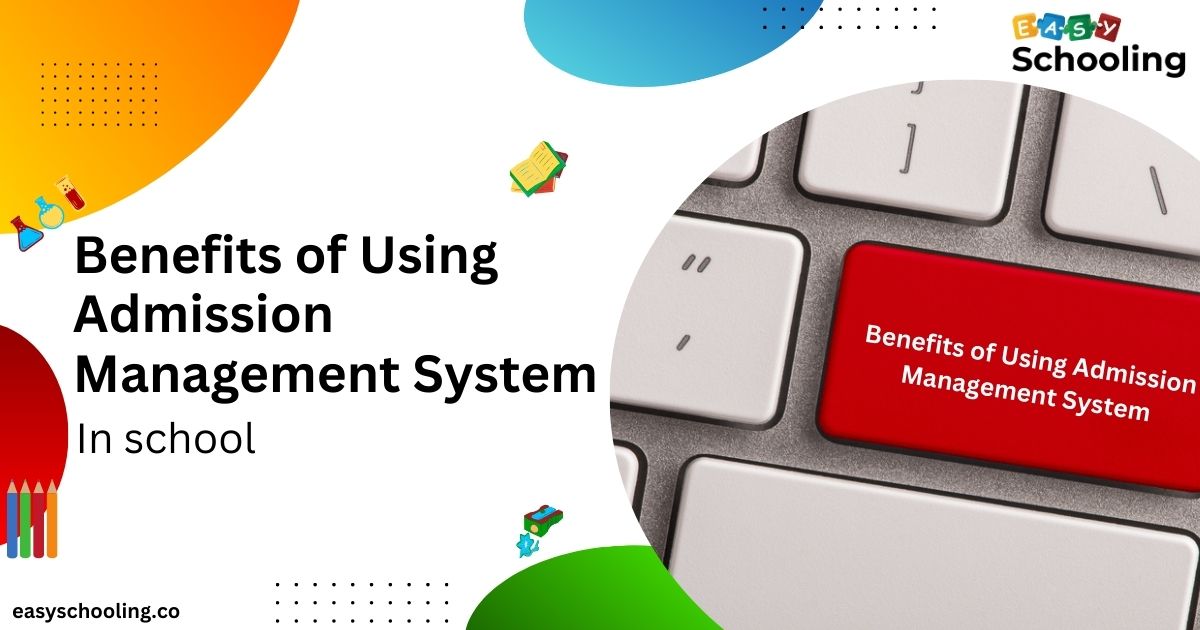In the digital era, schools are embracing innovative solutions to streamline administrative tasks and enhance efficiency. One such groundbreaking tool is education admissions software, also known as an admission management system. This technology has reshaped the traditional admission process, offering numerous advantages to educational institutions seeking smoother operations and improved experiences for both staff and prospective students.
Understanding Education Admissions Software
Education admissions software or an admission management system is a comprehensive digital platform designed to facilitate the entire student enrollment process. It covers a wide array of functionalities, from application submission and document management to communication with applicants and reporting. The primary aim is to automate and simplify tasks associated with admissions, ensuring a seamless and organized process for schools.
Benefits of Education Admissions Software
1. Enhanced Efficiency and Time Savings
- Automation of repetitive tasks like form filling and data entry.
- Streamlined communication with applicants, reducing manual follow-ups.
- Efficient document management, eliminating paperwork bottlenecks.
2. Improved Applicant Experience
- User-friendly interfaces for applicants during the application process.
- Real-time updates on application status, reducing uncertainty for candidates.
3. Centralized Data Management
- Consolidated storage of applicant information and documents in one place.
- Easy retrieval and analysis of data for reporting and decision-making.
4. Personalized Communication
- Customized messaging and notifications for applicants at different stages.
- Tailored information delivery based on applicant profiles and requirements.
5. Data Security and Compliance
- Robust security measures to protect sensitive applicant data.
- Compliance with data protection regulations and industry standards.
6. Analytics and Reporting
- Comprehensive reporting tools for insights into admission trends and performance.
- Data-driven decision-making for optimizing enrollment strategies.
7. Collaborative Workflows
- Seamless collaboration among admissions staff, reducing communication gaps.
- Task assignment and tracking features for efficient teamwork.
8. Cost Savings and Resource Optimization
- Reduction in printing and paperwork expenses.
- Optimal utilization of staff time due to streamlined processes.
9. Integration Capabilities
- Integration with other school management systems for seamless data flow.
- Compatibility with various devices for accessibility and convenience.
10. Scalability and Future-Proofing
- Ability to scale the system according to the school’s growing needs.
- Upgrades and updates to adapt to changing technological landscapes.
See more: 5 Compelling Reasons Schools Should Invest in Attendance Management System
FAQs about Education Admissions Software
Q 1: How does education admissions software benefit smaller schools?
Ans 1: Smaller schools can benefit from reduced administrative burdens, increased organization, and enhanced applicant experience, leveling the playing field in admissions.
Q 2: Is education admissions software secure for storing sensitive applicant data?
Ans 2: Yes, these systems employ robust security measures to ensure data safety and compliance with privacy regulations.
Q 3: Can education admissions software be customized according to a school’s specific requirements?
Ans 3: Absolutely, these systems often offer customization options to tailor functionalities to the unique needs of each educational institution.
Q 4: How does education admissions software improve staff collaboration?
Ans 4: By providing features for task assignment, real-time communication, and centralized data access, it fosters seamless collaboration among admissions staff.
Q 5: Can education admissions software integrate with other school management systems?
Ans 5: Yes, most systems offer integration capabilities, allowing seamless data flow between different school management tools.
Q 6: Does using an admission management system result in cost savings?
Ans 6: Indeed, schools experience cost savings through reduced paperwork, optimized staff time, and resource utilization.
Q 7: Is education admissions software scalable for growing schools?
Ans 7: Absolutely, these systems are designed to scale according to the increasing needs of educational institutions.
Q 8: How does the system offer personalized communication to applicants?
Ans 8: Education admissions software provides customized messaging and notifications tailored to each applicant’s stage in the admission process.
Q 9: Are analytics and reporting tools included in education admissions software?
Ans 9: Yes, comprehensive reporting tools provide valuable insights into admission trends and performance for informed decision-making.
Q 10: Can education admissions software be accessed across various devices?
Ans 10: Yes, most systems are compatible with different devices, ensuring accessibility and convenience for users.
Conclusion
Education admissions software serves as a game-changer for schools, revolutionizing the admission process and offering a multitude of benefits. With its ability to enhance efficiency, provide data-driven insights, and ensure a seamless experience for both staff and applicants, adopting an admission management system like EasySchooling becomes an imperative step towards modernizing educational institutions.
Utilizing education admissions software not only transforms administrative operations but also significantly contributes to improving the overall school experience, setting the stage for continued success in an ever-evolving educational landscape.
Don’t miss out on the opportunity to revolutionize your school’s admissions process—explore EasySchooling today!
Visit EasySchooling for more information on education admissions software.
